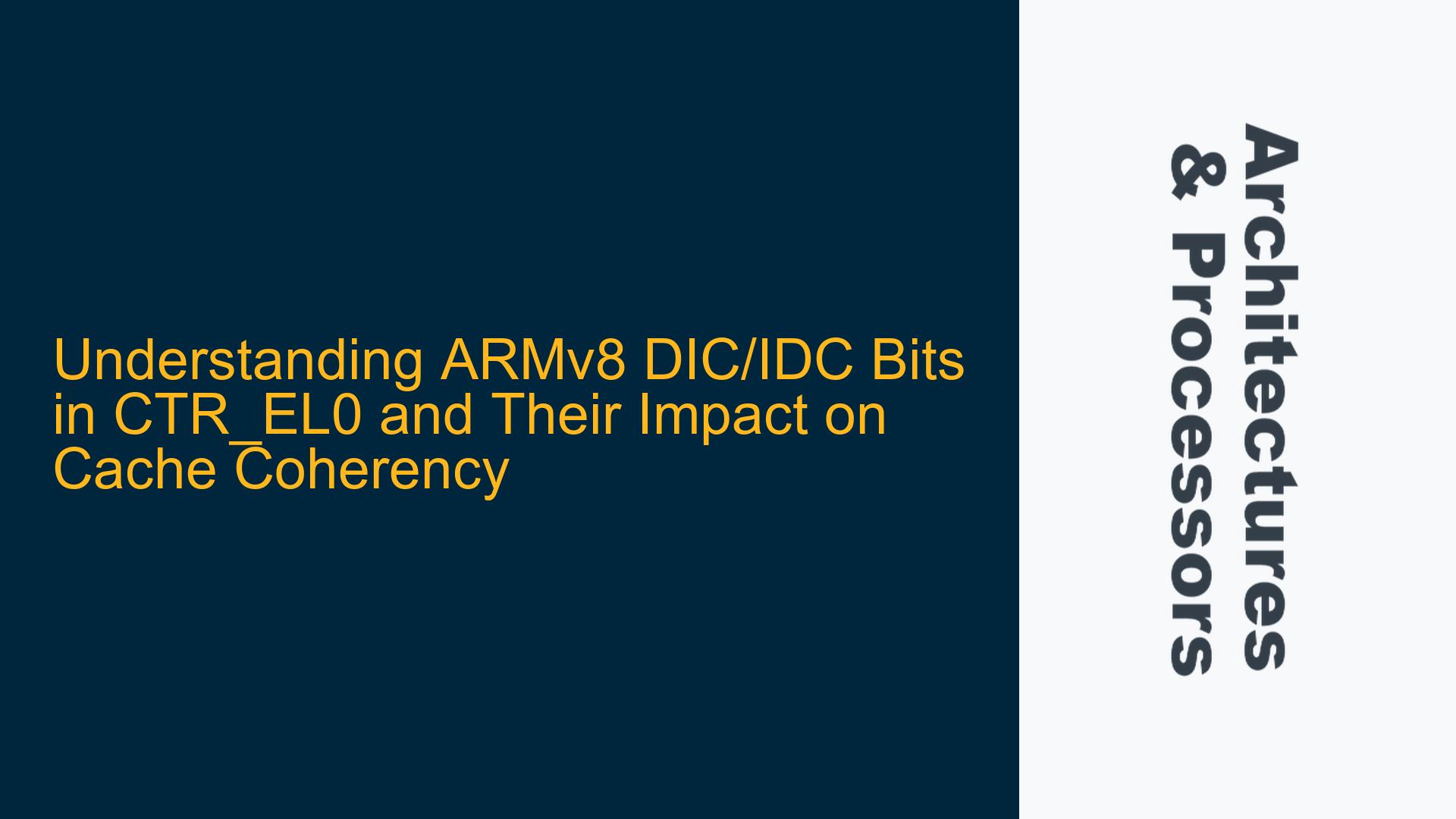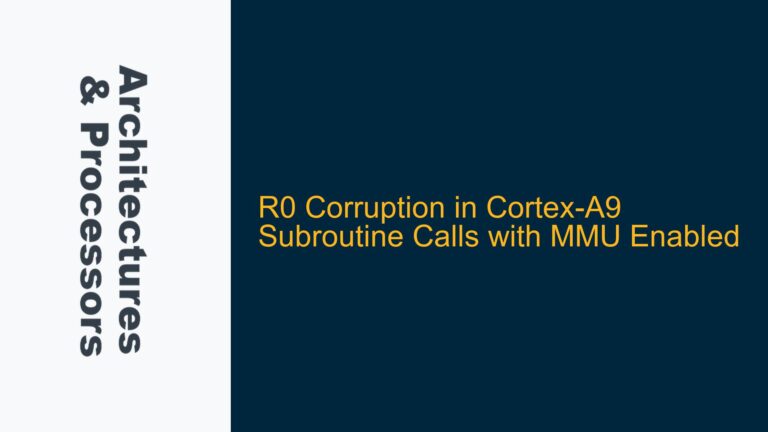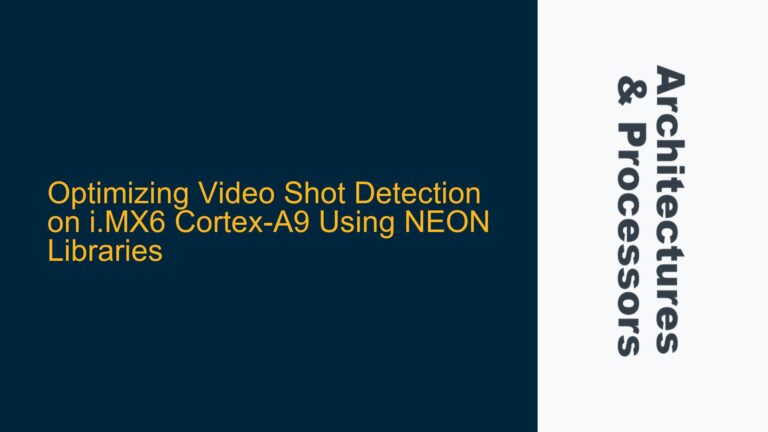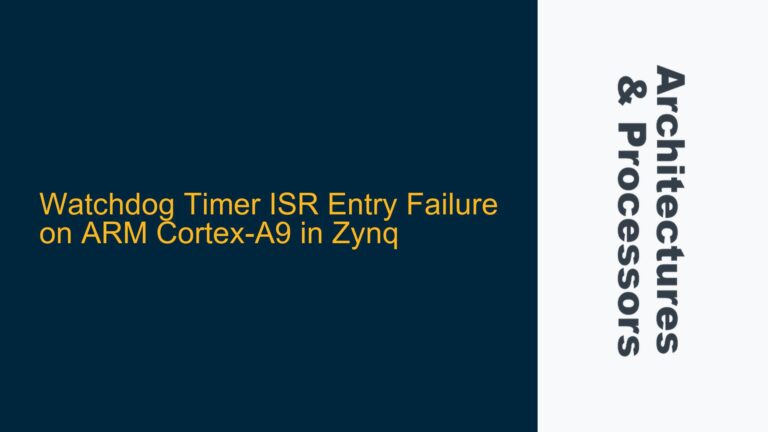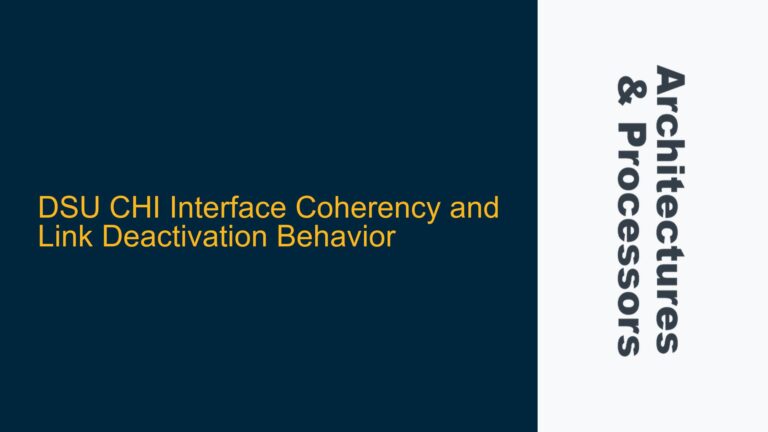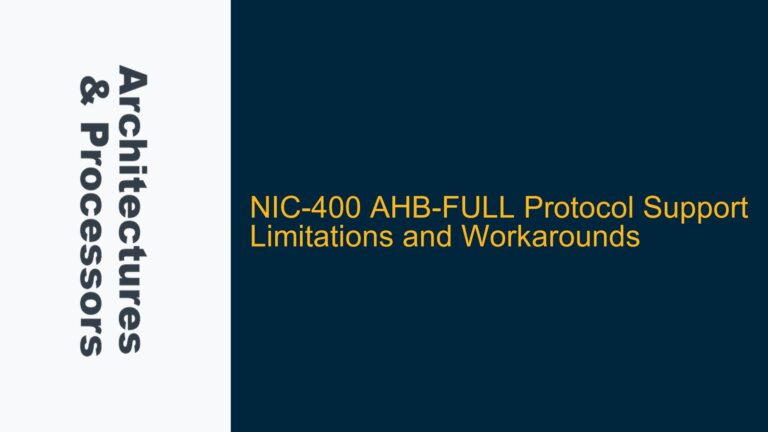ARMv8 DIC/IDC Bits and Their Role in Cache Coherency
The ARMv8 architecture introduces two critical bits in the Cache Type Register (CTR_EL0): DIC (Data Independent Timing) and IDC (Instruction Independent Timing). These bits play a pivotal role in managing cache coherency between the Data Cache (DCache) and the Instruction Cache (ICache). The primary function of these bits is to inform the software whether explicit cache maintenance operations are required to ensure coherency when the CPU executes an instruction stream that it has previously written.
In ARMv8, the DIC and IDC bits are part of the CTR_EL0 register, which provides information about the cache architecture of the processor. When DIC or IDC is set to 1, it indicates that the hardware automatically maintains coherency between the DCache and ICache for specific operations, thereby allowing the software to skip certain cache maintenance instructions. Conversely, when these bits are set to 0, the software must explicitly perform cache maintenance operations to ensure coherency.
The DIC bit, when set to 1, indicates that the hardware ensures that any modifications to the DCache are automatically visible to the ICache without requiring explicit cache cleaning operations. Similarly, the IDC bit, when set to 1, indicates that the hardware ensures that any modifications to the ICache are automatically visible to the DCache without requiring explicit cache invalidation operations. These bits are particularly relevant in scenarios where the CPU modifies its own instruction stream, such as in self-modifying code, dynamic compilation, or when loading code from disk to RAM.
Scenarios Requiring DCache-ICache Coherency and the Role of DIC/IDC Bits
The need for DCache-ICache coherency arises in several scenarios, most notably in self-modifying code, dynamic compilation, and when loading code from disk to RAM. In these scenarios, the CPU writes to memory locations that are subsequently executed as instructions. Without proper cache coherency mechanisms, the CPU might execute stale or incorrect instructions, leading to undefined behavior or system crashes.
In the case of self-modifying code, the CPU modifies its own instruction stream during execution. For example, a program might write new instructions to a memory location and then jump to that location to execute the newly written instructions. In this scenario, the CPU must ensure that the modified instructions in the DCache are visible to the ICache before executing them. If the DIC bit is set to 1, the hardware automatically ensures that the modified instructions in the DCache are visible to the ICache, eliminating the need for explicit cache cleaning operations. However, if the DIC bit is set to 0, the software must explicitly clean the DCache and invalidate the ICache to ensure coherency.
Dynamic compilation, as seen in languages like C# or in emulation/virtualization environments like QEMU, also requires DCache-ICache coherency. In these scenarios, the CPU generates new instructions at runtime and writes them to memory. The CPU must then execute these newly generated instructions. Again, if the DIC bit is set to 1, the hardware ensures that the newly generated instructions in the DCache are visible to the ICache without requiring explicit cache maintenance operations. If the DIC bit is set to 0, the software must explicitly clean the DCache and invalidate the ICache.
Another scenario where DCache-ICache coherency is crucial is when loading code from disk to RAM. In this case, the CPU writes the code from disk to RAM and then executes it. The CPU must ensure that the code written to RAM is visible to the ICache before executing it. If the DIC bit is set to 1, the hardware ensures that the code in the DCache is visible to the ICache without requiring explicit cache maintenance operations. If the DIC bit is set to 0, the software must explicitly clean the DCache and invalidate the ICache.
Implementing Cache Coherency with DIC/IDC Bits: Best Practices and Solutions
To ensure proper cache coherency in ARMv8 systems, it is essential to understand the implications of the DIC and IDC bits and implement the appropriate cache maintenance operations based on their values. The following steps outline the best practices for managing cache coherency in ARMv8 systems:
-
Determine the Values of DIC and IDC Bits: The first step in managing cache coherency is to determine the values of the DIC and IDC bits in the CTR_EL0 register. This can be done by reading the CTR_EL0 register and examining the values of the DIC and IDC bits. If either bit is set to 1, the hardware automatically ensures coherency between the DCache and ICache for the corresponding operations. If both bits are set to 0, the software must explicitly perform cache maintenance operations to ensure coherency.
-
Implement Conditional Cache Maintenance Operations: Based on the values of the DIC and IDC bits, the software should implement conditional cache maintenance operations. For example, if the DIC bit is set to 1, the software can skip the DCache clean operation when modifying the instruction stream. Similarly, if the IDC bit is set to 1, the software can skip the ICache invalidate operation. However, if either bit is set to 0, the software must explicitly perform the corresponding cache maintenance operation.
-
Use Data Synchronization Barriers (DSB) and Instruction Synchronization Barriers (ISB): In addition to cache maintenance operations, the software should use Data Synchronization Barriers (DSB) and Instruction Synchronization Barriers (ISB) to ensure that all memory operations are complete before proceeding. A DSB ensures that all memory accesses before the barrier are complete before any memory accesses after the barrier are executed. An ISB ensures that all instructions before the barrier are completed before any instructions after the barrier are executed. These barriers are particularly important in scenarios where the CPU modifies its own instruction stream, as they ensure that the modified instructions are visible to the ICache before they are executed.
-
Optimize Cache Maintenance Operations for Performance: In systems where the DIC and IDC bits are set to 0, the software must perform explicit cache maintenance operations to ensure coherency. However, these operations can be expensive in terms of performance. To optimize performance, the software should minimize the number of cache maintenance operations by batching them together and performing them only when necessary. For example, instead of cleaning the DCache and invalidating the ICache after every modification to the instruction stream, the software can batch these operations and perform them only after a series of modifications.
-
Handle Edge Cases and Special Scenarios: In some scenarios, the DIC and IDC bits may not provide sufficient coherency guarantees. For example, when cacheable data is to be read by a device through DMA, it is typically required to clean the data cache up to the Point of Coherency (PoC) to ensure that the device reads the updated data and not stale data. In such cases, the software must explicitly perform the necessary cache maintenance operations, regardless of the values of the DIC and IDC bits.
-
Leverage Hardware Features for Automatic Cache Coherency: In systems where the DIC and IDC bits are set to 1, the hardware automatically ensures coherency between the DCache and ICache for the corresponding operations. The software should leverage these hardware features to reduce the overhead of cache maintenance operations and improve system performance. For example, in the Linux kernel, the
dcache_clean_poufunction uses thealternative_ifmacro to conditionally skip the DCache clean operation if the IDC bit is set to 1. This optimization reduces the number of cache maintenance operations and improves performance. -
Test and Validate Cache Coherency Mechanisms: Finally, it is essential to test and validate the cache coherency mechanisms to ensure that they work as expected. This can be done by writing test cases that modify the instruction stream and verify that the CPU executes the correct instructions. The test cases should cover various scenarios, including self-modifying code, dynamic compilation, and loading code from disk to RAM. The test cases should also verify that the cache maintenance operations are performed correctly and that the DIC and IDC bits are handled appropriately.
In conclusion, the DIC and IDC bits in the CTR_EL0 register play a crucial role in managing cache coherency in ARMv8 systems. By understanding the implications of these bits and implementing the appropriate cache maintenance operations, software developers can ensure that their systems operate correctly and efficiently. The best practices outlined above provide a comprehensive guide to managing cache coherency in ARMv8 systems, helping developers avoid common pitfalls and optimize system performance.
